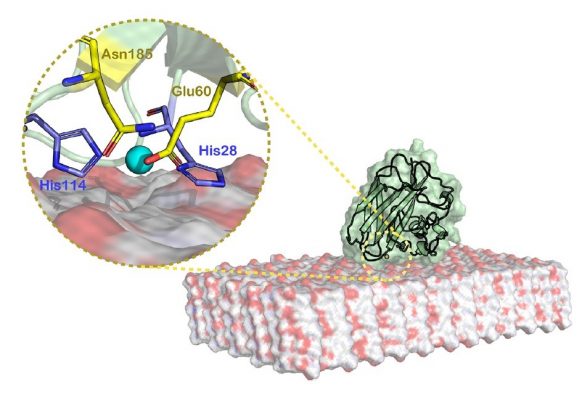Essays Biochem – Bastien Bissaro , Vincent G. H. Eijsink

The discovery of oxidative cleavage of glycosidic bonds by enzymes currently known as lytic polysaccharide monooxygenases (LPMOs) has profoundly changed our current understanding of enzymatic processes underlying the conversion of polysaccharides in the biosphere. LPMOs are truly unique enzymes, harboring a single copper atom in a solvent-exposed active site, allowing them to oxidize C-H bonds at the C1 and/or C4 carbon of glycosidic linkages found in recalcitrant, often crystalline polysaccharides such as cellulose and chitin. To catalyze this challenging reaction, LPMOs harness and control a powerful oxidative reaction that involves Fenton-like chemistry. In this essay, we first draw a brief portrait of the LPMO field, notably explaining the shift from the monooxygenase paradigm (i.e., using O2 as cosubstrate) to that of a peroxygenase (i.e., using H2O2). Then, we briefly review current understanding of how LPMOs generate and control a hydroxyl radical (HO•) generated through Cu(I)-catalyzed H2O2 homolysis, and how this radical is used to create the proposed Cu(II)-oxyl species, abstracting hydrogen atom of the C-H bond. We also point at the complexity of analyzing redox reactions involving reactive oxygen species and address potential deficiencies in the interpretation of existing LPMO data. Being the first copper enzymes shown to enable site-specific Fenton-like chemistry, and maybe not the only ones, LPMOs may serve as a blueprint for future research on monocopper peroxygenases.
Click here for the complete article!